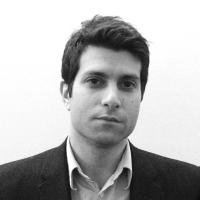The police slowdown in New York, where cops have virtually stopped making certain types of low-level arrests, might be coming to an end soon. For a lot of police officers, it’ll be an unhappy moment, because they never liked making the penny ante collars in the first place.
“We’re coming out of what was a pretty widespread stoppage of certain types of activity, the discretionary type of activity by and large,” police commissioner Bill Bratton told NPR’s Robert Siegel in an interview Friday.
In the rank and file of the police department, there are mixed feelings about the slowdown and a possible return to the status quo.
“I’d break it down like this,” an officer in East Harlem told The Daily Beast. “20 percent of the department is very active, they’d arrest their mothers if they could, and they want to get back to work. Another 20 percent doesn’t want any activity period; they’d be happy to hide and nap all day.”
The officer added, “And then there’s the great middle that thinks things are fine now as far as their concerned and all they want is good arrests.”
The not good arrests, by implication, were all the low level infractions policed as part of the so-called “Broken Windows” approach to law enforcement, defended by both Bratton and Mayor de Blasio. It holds that one of the ways to bust high-level crooks is to crack down on seemingly minor crimes.
Between December 29 2014—January 4 2015, arrests across New York city dropped by 56 percent and summonses were down 92 percent compared to the same time last year.
It’s not novel to point out that the police slowdown, which pitted the police and their unions against city hall, granted one of the central demands of the #blacklivesmatter protestors—an end to Broken Windows policing.
Less noted though, is how many police officers are themselves ambivalent about actively enforcing low level offenses, and how that bodes for the post-slowdown future of policing in New York.
Retired NYPD lieutenant Steve Osborne made the point in an op-ed for the New York Times that was sharply critical of both de Blasio and the protestors.
“More police productivity has meant far less crime, but at a certain point New York began to feel like, yes, a police state, and the police don’t like it any more than you,” Osborne wrote.
“The time has probably come for the Police Department to ease up on the low-level ‘broken-windows’ stuff while re-evaluating the impact it may or may not have on real, serious crime,” he added. “No one will welcome this more than the average cop on the beat, who has been pressed to find crime where so much less of it exists.”
Day to day, no one has been telling police officers in New York how not to do their jobs.
“It sounds very unusual,” the officer in East Harlem said, “but I haven’t seen any coordinated activity besides the union putting the message out and then saying jump.”
It hasn’t taken much effort to coordinate the slowdown because, as Osborne notes, average beat cops were never that excited in the first place with going after public urination and loitering arrests. To them, it was a distraction from stopping more serious crimes.
Broken Windows advocates argue that some cops always resisted more active policing. When Broken Windows was first introduced, they say, police officers had to be pushed, by Bratton among other, to adopt the active policing approach that brought crime down to its current historic lows in new York.
But as New York got safer, the methods rather than the results became the measures of success. More arrests meant better policing as the tail started to wag the dog.
Bratton himself has said nearly as much in criticizing his predecessor Ray Kelly’s overuse of the controversial stop and frisk tactic that overwhelmingly targeted minorities.
“The commissioner and the former mayor did a great job in the sense of keeping the community safe, keeping crime down, but one of the tools used to do that, I believe, was used too extensively,” Bratton said in March 2014.
Stop and Frisks have fallen considerably since their high in 2011 when 685,724 New Yorkers were stopped by police, but some numbers driven approaches remain embedded in the department.
As a detective in the Bronx tells The Daily Beast, “there technically are no quotas” in the police department “but you can call them what you want, “productivity goals,” they are back door quotas.”
And those back door quotas can put pressure on officers.
“I have to suspend my disbelief,” the officer in East Harlem said, “to see how sentencing a guy with an open container is going to really bring crime down.”
“Violent crimes haven’t gotten worse in my little slice of heaven despite the slowdown on summonses and misdemeanors,” the officer added. “We’re still responding to robbery patterns. We haven’t gone down in presence for the more serious offenses.”
He acknowledged that it was too soon to say how such a policing strategy would play out over an extended period. “Whether it works will reveal itself over time. That remains to be seen.”
Once New York is out of the slowdown, it’s not clear what kind of policing the city will see on the other side. Will Bratton push the police to bring arrests back up to levels before they dropped off or will the department test its ability to back off?
Maybe there will be some new middle ground possible despite the bluster and rhetoric. According to The Daily News, the combative president of the police union is pushing for just a slowdown that’s a little bit faster. As one police source told the paper, “He said they should go back to at least 50% of what they used to do.”





